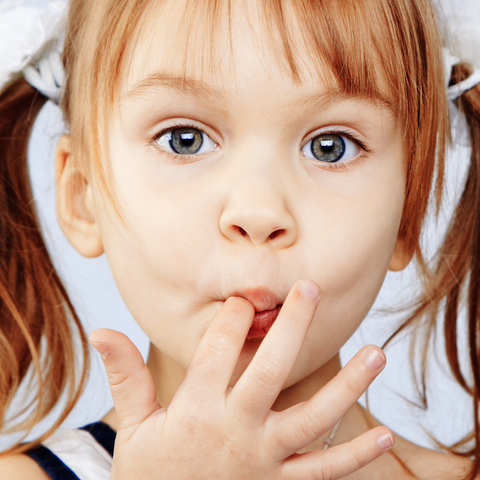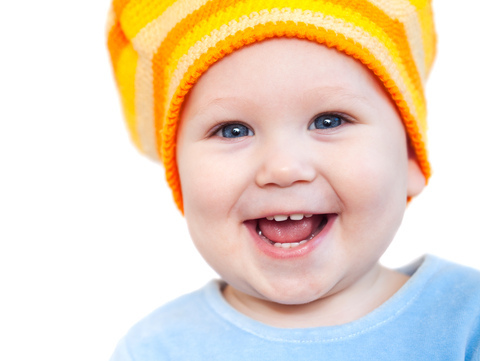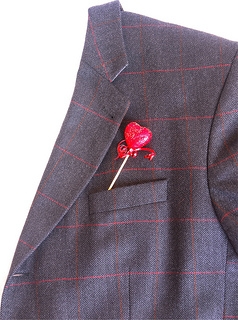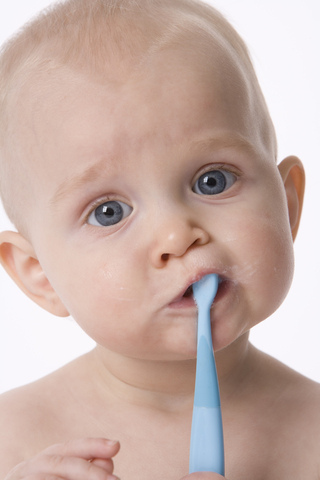March 30th, 2016

Many parents worry that their children’s teeth are not falling out on time. A lot of concerned parents want to know: When will my child lose his or her first baby tooth? At what age should the last tooth fall out? Is there a specific order in which the teeth are lost?
Dr. Allen Job and our team explain that a child's 20 baby teeth (primary teeth) typically come in by age three and begin to loosen and fall out on their own to make room for permanent teeth, which usually appear by the time your child is six. It is important to know that timing may vary, and girls typically lose their baby teeth earlier than boys. The last baby teeth will likely fall out by the time your child is 13.
So, which teeth do children lose first? Baby teeth tend to fall out in the order in which they came, which means the lower center incisors are usually the first to go when your child is between six and seven years old. The next teeth your child will lose are his or her top center pair, also called the upper central incisors.
It’s important to note that if a child loses a baby tooth early as a result of decay or an unforeseen accident, his or her permanent tooth may erupt early and potentially come in crooked due to limited space. If your child suffers an injury or has tooth decay, we encourage you to give us a call to set up an appointment with Dr. Allen Job.
While we know some children couldn’t be more excited to lose their baby teeth, we know others are anxious about this childhood milestone. When your child starts to lose teeth, our team at All Smiles Pediatric Dentistry encourages you to stress the importance of proper dental care on a daily basis.
Remember to:
- Remind your child to brush his or her teeth at least twice a day. Supervise and offer assistance as needed.
- Help your child floss his or her teeth at bedtime.
- Limit eating and drinking between meals and at bedtime, especially sugary treats and drinks, such as candy and soda.
- Schedule regular dental visits for your child every six months.
- Ask about the use of fluoride treatments and dental sealants to help prevent tooth decay.
To learn more about baby teeth, or to schedule your child's next visit with Dr. Allen Job at our San Diego, CA office, please give us a call today!

Dr. Allen Job, DDS, MS, MPH, MS is a board certified pediatric dentist who practices in San Diego, California, where he specializes in prevention. He is also an assistant professor at Loma Linda University Department of Pediatric Dentistry.
Tags: blog, All Smiles Pediatric Dentistry, baby teeth, best dentist in san diego, dental care, dentist, dentist near me, dentist san diego, Dr. Allen Job, kids dentist, kids dentist near me, pediatric dentist, pediatric dentist near me, pediatric dentist san diego, San Diego CA, san diego dentist
Posted in Uncategorized | No Comments
March 9th, 2016

Sucking is a common instinct for babies and the use of a pacifier or their thumb offers a sense of safety and security, as well a way to relax.
According to the American Academy of Pediatric Dentistry, the majority of children will stop using a pacifier and stop sucking their thumb on their own between the ages of two and four years of age. Prolonged thumb sucking or use of a pacifier can have dental consequences and needs be taken care of sooner, rather than later.
Many dentists favor pacifier use over thumb sucking because it makes it easier for parents to control and even limit the use of a pacifier. If thumb sucking lingers, the same strategies used to break the baby from using the pacifier can be used for thumb sucking.
Precautions
- Try to find "orthodontically correct" pacifiers, as they may reduce the risk of dental problems.
- Never dip a pacifier in sugar or honey to calm the baby.
- Give your baby a bottle of water at bedtime, never juice.
Dental Complications
Long term pacifier use can lead to an assortment of dental complications including:
- The bottom teeth leaning inward
- The top teeth slanting outward
- Misalignment of the baby’s jaw
The risk of any or all of these things happening is greatly increased if thumb sucking and pacifier use is sustained after the baby’s teeth start to come in.
Breaking the Thumb Sucking and Pacifier Habit
Most toddlers and children will stop sucking their thumb or using a pacifier between the ages of two and four on their own. However, if intervention is necessary here are a few tips to help your child break the habit:
- Slowly decreasing the use of a pacifier can be effective for many children. This method does not work very well with thumb sucking.
- Thumb sucking can be more difficult to break. Dr. Allen Job may recommend using an over the counter cream that you put on the child’s thumb; it doesn’t taste good and usually does the trick.
- Rewards can also help with the process.
- If these simple commonly used strategies do not work, there are oral devices that will prevent a child from sucking their thumb or a pacifier.
Talk to Dr. Allen Job and our team, as we have many tricks up our sleeves that will be effective in breaking your child’s thumb sucking or pacifier use. Contact All Smiles Pediatric Dentistry today to schedule your child's dental visit.
*This blog is part of the Baby Steps Series. Look for future blogs in this series.

Dr. Allen Job, DDS, MS, MPH, MS is a board certified pediatric dentist who practices in San Diego, California, where he specializes in prevention. He is also an assistant professor at Loma Linda University Department of Pediatric Dentistry.
Tags: blog, All Smiles Pediatric Dentistry, baby teeth, best dentist in san diego, dentist, dentist near me, dentist san diego, Dr. Allen Job, kids dentist, kids dentist near me, pacifiers, pediatric dentist, pediatric dentist near me, pediatric dentist san diego, San Diego CA, san diego dentist, thumb sucking
Posted in Uncategorized | No Comments
March 8th, 2016

Dr. Allen Job and our team know it can be easy to underestimate the significance of baby teeth. At All Smiles Pediatric Dentistry, we sometimes meet parents who assume that since their child's baby teeth, also known as primary teeth, eventually fall out and are replaced, they are less important. But did you know baby teeth serve purposes other than biting, chewing, and digesting food properly?
Baby teeth are essential not only for your child’s language development, but they also serve other important functions, like contributing to the normal development of your child’s jaw bones and facial muscles. Baby teeth also reserve space for your child’s future permanent teeth.
So, when do baby teeth fall out?
A baby tooth is intended to remain in your child’s mouth until the permanent tooth underneath it is ready to take its place. Sometimes, either due to a tooth being knocked out accidentally or being removed because of tooth decay, kids lose baby teeth before the permanent teeth are ready to erupt. If a tooth is lost, the teeth on either side of the open space may possibly push into the open space. The result? There may not be enough room for the permanent tooth when it is finally ready to erupt.
If you have any questions about your toddler’s teeth, or if your child is experiencing issues that concern you, please give us a call to set up an appointment at our convenient San Diego, CA office.
*This blog is part of the Baby Steps Series. Look for future blogs in this series.

Dr. Allen Job, DDS, MS, MPH, MS is a board certified pediatric dentist who practices in San Diego, California, where he specializes in prevention. He is also an assistant professor at Loma Linda University Department of Pediatric Dentistry.
Tags: blog, All Smiles Pediatric Dentistry, baby teeth, best dentist in san diego, dentist, dentist near me, dentist san diego, Dr. Allen Job, kids dentist, kids dentist near me, pediatric dentist, pediatric dentist near me, pediatric dentist san diego, San Diego CA, san diego dentist
Posted in Uncategorized | No Comments
February 17th, 2016

Parents, and even older children, can become concerned about tooth development. Wondering when teeth should erupt, and being concerned when the teeth do not appear on schedule, is common. First, you need to remember that each individual is different. Guidelines are just guidelines, but Dr. Allen Job and our team at All Smiles Pediatric Dentistry thought we would pass on this information to help you.
Primary teeth
Children normally have 20 primary or baby teeth. The first two to appear are usually the lower central incisors between six to ten months of age. These fall out between five and seven years of age.
- Two upper central incisors – eight to 12 months
- Two upper lateral incisors – nine to 13 months
- Two upper cuspids or canines – 16 to 22 months
- Two upper first molars – 13 to 19 months
- Two upper second molars – 25 to 33 months
- Two lower lateral incisors – ten to 16 months
- Two lower cuspids or canines – 17 to 23 months
- Two lower first molars – 14 to 18 months
- Two lower second molars – 13 to 31 months
As you can see, all the primary teeth normally have erupted before three years of age, but the timeline can vary by four to six months. Except for the lower central incisors and second molars, upper teeth tend to appear before lower teeth.
Permanent or adult teeth
Adults normally have 32 permanent teeth. However, four of these are wisdom teeth or third molars, which are often removed.
- Two upper central incisors – seven to eight years
- Two upper lateral incisors – eight to nine years
- Two upper cuspids or canines – 11 to 12 years
- Two upper first premolars or bicuspids – ten to 11 years
- Two upper second premolars or bicuspids – ten to 12 years
- Two upper first molars – six to seven years
- Two upper second molars – 12 to 13 years
- Two upper third molars or wisdom teeth – 17 to 21 years
- Two lower central incisors – six to seven years
- Two lower lateral incisors – seven to eight years
- Two lower cuspids or canines – nine to ten years
- Two lower first premolars or bicuspids – ten to 12 years
- Two lower second premolars or bicuspids – 11 to 12 years
- Two lower first molars – six to seven years
- Two lower second molars – 11 to 13 years
- Two lower third molars or wisdom teeth – 17 to 21 years
Please discuss any of your dental concerns during your visit with Dr. Allen Job. If there is a problem with tooth development, the earlier we address it, the better the outcome. We specialize in pediatric dentistry and look forward to helping you and your child with all your dental needs. To learn more about tooth eruption, or to schedule an appointment with Dr. Allen Job, please give us a call at our convenient San Diego, CA office!

Dr. Allen Job, DDS, MS, MPH, MS is a board certified pediatric dentist who practices in San Diego, California, where he specializes in prevention. He is also an assistant professor at Loma Linda University Department of Pediatric Dentistry.
Tags: All Smiles Pediatric Dentistry, baby teeth, best dentist in san diego, dental, dentist, dentist near me, dentist san diego, Dr. Allen Job, kids dentist, kids dentist near me, pediatric dentist, pediatric dentist near me, pediatric dentist san diego, San Diego CA, san diego dentist, tooth eruption
Posted in Uncategorized | No Comments
February 10th, 2016

Did you know the actions leading to the beginnings of Valentine's Day were actually centered on the avoidance of war? A Catholic priest named Valentine defied the orders of the Emperor Claudius II and secretly married young men and their brides after the emperor had declared it illegal because only single, young men could be sent to war. Rather than lose potential soldiers to fight his war, Claudius attempted to hoard them by proclaiming marriage illegal.
Valentine continued to marry young couples anyway and, eventually, was put to death for it in 270 AD. Before his death, he sent a letter to a secret love and signed it “From your Valentine”. Nearly 1,800 years later, people are still signing letters and cards in this manner. This year, carry on the tradition started long ago, while adding your own twist. Here are a few suggestions.
Simple and Creative Valentine's Day Ideas
- Memorialize it with a Photo. Couples often have photos taken around Christmas, but Valentine's Day photos allow you to capitalize on romance. Famous couple Julia Child and her husband, Paul, had their picture taken together every Valentine's Day and included their sense of humor with silly props.
- Return to Your First Date Location. Even if your first date together was at a local hotdog stand, its sentimental value can make it a fun part of your Valentine's Day agenda. Be creative and make a treasure hunt with clues that lead your partner to the original date location, where you can express your love with flowers or a gift.
- “From Your Valentine” Messages. Deliver your message in a creative way to make this Valentine's Day stand out from the others. Bake your partner's favorite treat and write a message on it with a tube of icing, or draw a note on the steamed up mirror so it shows up when your partner takes a shower.
Although Valentine's Day is a day to celebrate love, it doesn't have to be a special day only for couples. If you're single, use this special day to shower yourself with love, because you're worth it! After all, the priest Valentine believed so strongly in the sanctity of love that he was willing to risk his life for it. Whether you're in a relationship or single, young or old, romantic or not, Valentine's Day is for you. Happy Valentine’s Day from the pediatric dentist office of Dr. Allen Job.

Dr. Allen Job, DDS, MS, MPH, MS is a board certified pediatric dentist who practices in San Diego, California, where he specializes in prevention. He is also an assistant professor at Loma Linda University Department of Pediatric Dentistry.
Tags: All Smiles Pediatric Dentistry, baby teeth, best dentist in san diego, dentist, dentist near me, dentist san diego, Dr. Allen Job, kids dentist, kids dentist near me, pediatric dentist, pediatric dentist near me, pediatric dentist san diego, San Diego CA, san diego dentist, Valentine's Day
Posted in Uncategorized | No Comments
January 27th, 2016

Because babies’ teeth don’t appear until around six to eight months of age, it’s a natural misconception that they don’t need dental care. But the steps you take as the parent of an infant can help your baby maintain good oral health and develop healthy dental habits in the future.
It’s easy to take care of a baby’s teeth and gums, especially when oral hygiene for your infant becomes part of the normal daily routine. Learn more about how you can promote good dental health for your baby with these tips and considerations.
Taking Care of Baby’s Oral Hygiene
- Dental Hygiene for Birth to Six Months. Cleaning your infant’s gums is as important as cleaning teeth will be later. Hold your baby in your arms, and with a clean, moistened washcloth wrapped around your index finger, gently massage his or her gums.
- Dental Hygiene for Six to 12 Months. After teeth begin to appear, it’s time to switch to a soft, children’s toothbrush for teeth cleaning. New research has shown that fluoride toothpaste is safe and recommended for use once your baby’s first tooth arrives. Gently brush your baby’s teeth after each feeding, in the morning, and before bedtime, just as you did before teeth appeared.
- Good Bedtime Habits. One of the most important things you can do to protect your infant from tooth decay is to avoid the habit of putting baby to bed with a bottle. Use other soothing bedtime activities, such as rocking and lullabies, to help your baby drift off to sleep.
- A Note about Dental Decay. Many people are unaware that dental decay is transmissible. Avoid placing your baby’s bottle, sippy cup, or pacifier in your own mouth to test the temperature. Likewise, don’t share utensils with your baby.
Partner With Your Dentist
Your baby should receive his or her first dental health checkup by the age of six months. Even though your infant may not have teeth yet, Dr. Allen Job can assess the risk your baby might face for oral diseases that affect hard or soft tissues. Dr. Allen Job can also provide you with instructions for infant oral hygiene, and explain what steps to add as your baby grows and develops.
All Smiles Pediatric Dentistry is your partner for good oral health, and we’re here to make caring for your baby’s dental hygiene and health easier and more enjoyable for you. Contact our office for your child's next dental appointment. We are centrally located in San Diego, CA.
*This blog is part of the Baby Steps Series. Look for future blogs in this series.

Dr. Allen Job, DDS, MS, MPH, MS is a board certified pediatric dentist who practices in San Diego, California, where he specializes in prevention. He is also an assistant professor at Loma Linda University Department of Pediatric Dentistry.
Tags: All Smiles Pediatric Dentistry, baby teeth, best dentist in san diego, dentist, dentist near me, dentist san diego, Dr. Allen Job, infant oral care, kids dentist, kids dentist near me, pediatric dentist, pediatric dentist near me, pediatric dentist san diego, San Diego CA, san diego dentist
Posted in Uncategorized | No Comments
January 20th, 2016

Children are born with a set of primary teeth – 20 to be exact – that help them learn to chew and speak, and develop enough space in the jaw for the permanent teeth that will appear several years later. Kids are especially susceptible to decay, which can cause pain and tooth loss – a problem that could interfere with oral development. As a parent, it is important that you take proactive steps to keep your child’s teeth as healthy as possible.
Bottles and “Sippie Cups”
One of the biggest culprits of childhood tooth decay is poor diet. This begins as early as a few months old, when children are often allowed to go to bed with bottles and “sippie cups” of milk or juice. The sugars in these beverages – even natural sugars – can steadily decay the teeth.
Dr. Allen Job and our staff suggest serving children milk and juice only at meal times, and limiting juice intake to just a few ounces per day. If your child becomes thirsty between meals or likes to go to bed with a bottle, serve water during these times.
Hygiene
As a parent, you can establish healthy dental habits long before your child’s first tooth erupts. Start by gently wiping your baby’s gums with a clean wash cloth during the first months of life. By age one, graduate to an appropriately sized toothbrush with fluoridated toothpaste, and brush at least twice a day.
Dental Visits
Dental visits should start young and continue on a regular basis throughout your child's life. Dr. Allen Job and our staff recommend parents bring their children to All Smiles Pediatric Dentistry for the first time no later than the child’s first birthday. Initial visits concentrate on parental education, while later visits may include thorough cleanings and fluoride treatments as your child grows.
For more information about keeping your child’s teeth cavity-free, contact our San Diego, CA office to schedule a dental consultation and checkup.

Dr. Allen Job, DDS, MS, MPH, MS is a board certified pediatric dentist who practices in San Diego, California, where he specializes in prevention. He is also an assistant professor at Loma Linda University Department of Pediatric Dentistry.
Tags: All Smiles Pediatric Dentistry, baby teeth, best dentist in san diego, dental visits, dentist, dentist near me, dentist san diego, dentistry, Dr. Allen Job, kids dentist, kids dentist near me, oral hygiene, parenting, pediatric dentist, pediatric dentist near me, pediatric dentist san diego, san diego dentist, sippy cups
Posted in Uncategorized | No Comments
January 6th, 2016

One question our team at All Smiles Pediatric Dentistry hear all the time is, “When should I start brushing my baby’s teeth?”
You should begin regular cleanings even before your baby has teeth. After each breast feeding (or bottle-feeding) use a clean, damp washcloth to gently rub your baby’s gum tissue. You may wrap the material around one finger to make it easier to remove any food bits from your baby’s mouth.
When your baby’s first tooth comes in, switch to a baby toothbrush. Look for special baby toothbrushes in your drugstore; they have just a few bristles and are very soft. There are even brushes shaped like finger puppets that fit over the tip of your pointer finger! All you need at this point is water (no toothpaste yet).
After a few more teeth appear, you may start using toothpaste, but you only need a tiny bit, and make sure it doesn’t contain fluoride for the first two years. From the beginning, have your little one practice spitting the toothpaste out after brushing. That way, he or she will already have the good habit of spitting when you switch to fluoride toothpaste, which should never be swallowed.
If you have any questions about caring for your baby’s teeth, then schedule an appointment at our convenient San Diego, CA office. Please contact All Smiles Pediatric Dentistry.
*This blog is part of the Baby Steps Series. Look for future blogs in this series.

Dr. Allen Job, DDS, MS, MPH, MS is a board certified pediatric dentist who practices in San Diego, California, where he specializes in prevention. He is also an assistant professor at Loma Linda University Department of Pediatric Dentistry.
Tags: All Smiles Pediatric Dentistry, baby dental care, baby steps, baby teeth, best dentist in san diego, dentist, dentist near me, dentist san diego, kids dentist, kids dentist near me, pediatric dentist, pediatric dentist near me, pediatric dentist san diego, san diego dentist, toothbrush
Posted in Uncategorized | No Comments











